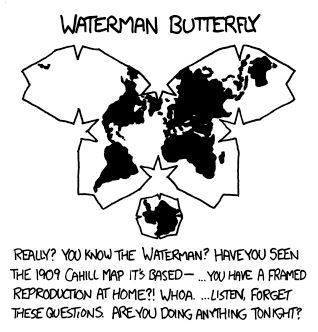Ireland disliked that.Not really. Ireland would be annoyed to be included.
That’s the point?
No, Ireland is excluded and would want to be. Northern Ireland, is included as part of the UK.
Unless op meant northern Ireland would be upset? In which case they would probably be more annoyed at not being recognised as a country or entity themselves. Sure, some don’t want to be part of the UK, but they recognise the reality that they currently are and their country is called Northern Ireland. This map recognises that and seems inoffensive to Ireland (Republic of Ireland).
I wonder if they actually meant the British Isles rather than the UK
Oh, for sure, but for a moment, there was certainly a lot of trouble deciding who Northern Ireland belonged to.
I’d wager there are still plenty of people there who’d secretly still love to see a united Ireland. Is that opinion popular? I dunno. I don’t live there.
But hey, Kinky Boots is a fun song.
There are a lot of people that feel strongly one way or the other, it caused quite a bit of trouble a while back…
Capital T for trouble
Going by opinion polling in Northern Ireland, it has been roughly half No, a third Yes, and the remainder Undecided for quite a while
deleted by creator
If the IRA kicks back up my genes will awaken like a fucking sleeper cell
Fucking plastic paddy
Oh cool, domestic terrorism. How fun and quirky of you
It was for a good cause
I don’t think the Omagh families would agree with you.
American?
This looks like two lines intersecting at a 90° angle. So we have 3 variables we can control: the x and y coordinates of the intersection and the angle (modulo a quarter circle).
It feels like it’s always possible to distribute a population equally in the four squares. Anyone wanna prove it?
I can’t find it now but I seem to remember a proof that a collection of points could be divided in half by a straight line, first by assuming that no three points were collinear, then by picking any point on the plane, drawing a straight line through it, then rotating it around that point until you could get half the points on each side. The implication of this though is that you could pick someone in Aberdeen, which the above map would seem to suggest isn’t possible.
The location of the second line would have to be determined by sliding it along the first, rather than rotation, so it could end up resting on 0, 1 or 2 points. Either way you’re probably close enough. The proof, for or against, is outside my mathematical ability.
In that description, the two lines wouldn’t necessarily be perpendicular.
Edit: I mean that if you’re trying to apply the same mechanism to the second line, you wouldn’t necessarily end up with the lines intersecting at 90°. But maybe I’m misunderstanding.
You can bisect the population with a line at any angle or passing through any given point. Given any one bisecting line, you can find another line that splits the map into four equal quadrants, but the lines wouldn’t necessarily be perpendicular.
I’ll see if I can come up with a proof for a perpendicular quad-section, and reply to the comment above.
Edit: I can’t. Not simple enough for me to find at the moment!
I think it might not be possible.
Imagine the population is a uniform circle centred around that intersection point so the quadrants have equal population - but make the circle small enough it doesn’t reach Belfast.
Now add one person in Belfast. How do we move the lines slightly so it’s still right?
If you move NNW along the line, Belfast quadrant can match Oxford and Cambridge, but Edinburgh is too small. If you move WSW, Edinburgh, Cambridge and Belfast quadrants match but Oxford is too small.
If you move the intersection point directly toward Belfast, does that work? I think Cambridge quadrant grows faster than either Edinburgh or Oxford.
You can rotate it first. Not a tiny amount but all the way round to make one line go through Belfast’s new resident. Then move the intersection slightly.
So that means, for a tiny change (continuous variation) in the population distribution, the supposed intersection and/or angle are discontinuous (sudden big change). That discontinuity ruins my approaches to finding a proof, and I think means there might not be one. It might not always be possible to get perpendicular equal quadrants like that.
That’s as far as I got, anyway!
I think it’s possible to prove, under the right conditions. One assumption is, that Humans are not point like, so that depending on the exact position the person may be half on two sides. For simplicity, I assume a continuos finite population density everywhere, which can be a small peak where a person is and zero everywhere else.
In this case, it is obvious that for any angle, we can draw a line splitting the population in half. Imagine just shifting the line until the population on both sides is the same. This means we can, for any angle, draw a cross with each line splitting the population in half. This can be written as the following condition, considering the colors above and R, G, Y, B as populations in the Red, Green, Yellow, and Blue quarters, respectively: R+G=B+Y and R+B=Y+G. So G=B and R=Y. What we still need to prove is that it is always possible to have G=R. Now we can do this continuously for each angle of the cross, so starting with an arbitrary cross, we rotate it slowly 1/4 turn counterclockwise. Now R is where G was before. Due to the conditions it can be exactly the same cross but with colors switched. So if R>G before, we now have R<B=G, so during this path, and everything being continuous, there must be an angle for which R=G holds and so all four quarters are at equal size.
The real question is, does this hold on a globe with great circles is splitting lines?
deleted by creator
Poor Shetland. Not even in a box on this map.
deleted by creator
what’s in the middle
Based on me overlaying this image with a regular map that shows locations, the village of Dunton Bassett just south of Leicester
Sherwood forest where the sword in the stone is
Neat. Now do Canada.
That might actually be hard, becausethe border with the US is pretty straight, but not totally straight, and one of the lines would have to go roughly along it. Chile might actually be easier.
I don’t want to be in the Lib-Right quadrant though
I’m surprised how full the blue quadrant is, it must be mostly NI.
Also, thought this was a Ukraine post at first from the thumbnail.
Edit: Sorry, meant to reply to a comment









